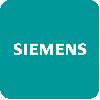Increased communication and PLC processing performance
Sales and Delivery Release for STEP 7 V20
Highlights SIMATIC STEP 7 V20
STEP 7 V20 includes new functions for all phases of the engineering workflow.
Hardware
New SIMATIC Controller Generation S7-1200 G2>109973175
- Space savings on the DIN rail
- Increased communication and PLC processing performance
- More memory
- Shared program and data memory, identical to that found in SIMATIC S7-1500 CPUs
- Improved scalability for functional machine safety (fail-safe CPU derivatives)
- Efficient motion control functionality
- Large selection of different digital and analog expansion modules
- Up to two signal boards that can be directly connected to the CPU without increasing its footprint
- Signal modules that expand the number of inputs and outputs to support demanding applications
- NFC functionality (Near Field Communication)
- Ability to diagnose and parameterize a specific CPU in conjunction with the corresponding smartphone app
- New web server design – latest technology, identical to that found in SIMATIC S7-1500 CPUs
Innovated SIMATIC S7-1500 CPUs 1517(F)-3 PN und 1518(F)-3 PN >109972771
- Performance improvement, e.g. during bit assignment, by up to a factor of three
- 100% more program memory
- Significantly more data memory:
- 50 MB for 1517(F) CPU
- 150 MB for 1518(F) CPU
- Higher communication performance
- Performance increase with OPC UA and Web API (Read/Write) by up to 200%
- Performance improvement with OUC by about 80%
- Completely revamped display implementation > no need for your own FW
- Design and usability as in the existing CPUs 1515-2 PN and 1516-3 PN/DP with the article number 6ES751x-yxx02-0AB0
Innovierte SIMATIC S7-1500 CPUs 1516T(F)-3 PN, 1517T(F)-3 PN und 1518T(F)-3 PN >109971822
- Performance improvement:
- for e.g. bit instructions by a factor of up to 5
- e.g. motion control runtime by a factor of up to 2.5 (depending on application, design via TIA Selection Tool)
- Up to 100% more program memory
- CPU 1516T/TF: 3 MB
- CPU 1517T/TF: 6 MB
- CPU 1518T/TF: 18 MB
- Significantly more data memory
- CPU 1516T/TF: 25 MB
- CPU 1517T/TF: 50 MB
- CPU 1518T/TF: 150 MB
- Higher communication performance
- Performance increase of up to 200% for OPC UA and Web API (Read/Write)
- OUC performance increase of approx. 80%
- Significantly more motion control ressources and extended motion control ressources
- Integrated technology functions
- Innovative design and handling
- Integrated system diagnostics
Hardware-Configuration
- More flexible access control for multiple users based on individual rights with standardized user management
- Unique user accounts with individual access rights for a suitable access configuration corresponding to the tasks of the user
- Improved efficiency of download scenarios:
- A single user account can be used for various PLC services (e.g. engineering access, web server, OPC UA access)
- Roles/rights concept for various PLC functionalities, integrated into the existing TIA Portal UMAC configuration
- System-defined PLC roles for simple configuration
- Improved security wizard for fast UMAC setup
- User can enable/disable the following dialogs in the TIA Portal settings:
- "Load preview" and "Load results " dialogs, if no user decision is required
- "Software synchronization" dialog. When the dialog is disabled, the download to the controller takes place "without synchronization".
- Configuration of IO devices that are used jointly by more than two IO controllers in a project
- Starting in STEP 7 (TIA Portal) Version V18, it was already possible to configure IO devices that are used jointly by two IO controllers in a project. In Version V20, you can configure IO devices that are used jointly by more than two IO controllers. When the configuration is uploaded from the PLC to a project already containing IO devices used jointly by more than one IO controller, these IO devices are assigned to the appropriate IO controllers.
SIMATIC Source Documents (SD): New export format for LAD-Bausteine, DBs & UDTs
- You can export LAD blocks, data blocks and PLC data types (UDTs) to the easy-to-read textual SIMATIC SD format. Advantages of this format include:
- Compatibility and versionability
- Support of integration into commonly used version control systems such as Git
- Automation of engineering workflows
- Use of external comparison tools
Named value data types: Online view and use in libraries (S7-1500)
With STEP 7 (TIA Portal), you can used "Named values" (NVTs) in your program. These are defined in IEC 61131-3 as a way to define constants with a name and a value. They can then be used in programs to improve readability and maintainability.
With V20, the "Named value data types" function offers the following new features:
- Monitoring online:
- Named value data types can now be monitored online in code and data blocks. If you have declared a name for the current value, this name is displayed by default. If a name was not declared, the current value of the data type is displayed. Some editors, such as the programming editor, allow you to toggle between different display formats.
- Named value data types can be used as types in global libraries and project libraries.
- Applying the namespace default setting
- If you change the namespace default setting of a software unit, you can now apply the change to lower-level named value data types. You use the "Apply namespace to underlying elements" button for this.
- Use in F-programs
- You can now use named value data types in know-how-protected F-programs.
Nesting depth for structures (S7-1500)
For S7-1500 CPUs with firmware ≥ V4.0, the nesting depth has been extended for the following elements:
- PLC data types
- Tags of data type STRUCT
- Tags of data type ARRAY of STRUCT / ARRAY of UDT
Previously, the maximum nesting depth was 8 elements. Now you can nest up to 26 elements within each other. An ARRAY of STRUCT/UDT uses three hierarchy levels each. If you use these data types, the maximum nesting depth is reduced accordingly.
Setting of font for title and comment
The font setting is now applied to the general text fields of the block programming:
- Block title and comment
- Network title and comment
You can also now specify the font and font size for the program code of SCL blocks. Selection of a monospace font allows you to better structure the program code or your comments.
System data type ResolvedSymbol available for more instructions (S7-1500)
The range of functions available has been expanded for various instructions. In addition to the VARIANT data type, you can also supply the input parameter with a tag of system data type ResolvedSymbol.
This pertains to the following instructions:
- CountOfElements (LAD, FBD, STL, SCL)
- IS_ARRAY (LAD, FBD, STL, SCL)
- TypeOfElements (SCL)
Sorting in the PLC tag table
In the filter view of the PLC tag table, sorting is now done alphanumerically. In the standard view of the PLC table, sorting continues to be done lexicographically.
Optimization of function "Open block/PLC data type" <f7>
The function "Open block/PLC data type" now searches the following areas by default:
- If an element within a CPU is selected, the entire CPU is searched.
- If an element outside a CPU is selected, the entire project is searched.</f7>
Optimized loading behavior for software units
The loading behavior of software units has been changed to enable easier loading of individual software units independent of other software units.
Optional hiding of the "Load preview" and "Software synchronization" dialogs
A TIA Portal setting can be used to suppress display of the "Load preview" dialog, which is otherwise displayed by default. If this setting is active, the "Load preview" dialog is now displayed only if a user input is required.
For the "Software synchronization" dialog, you can specify that the dialog always be skipped and the download to the CPU always take place without synchronization.
Loading with synchronization (S7-1500 R/H)
S7-1500 R/H CPUS (firmware ≥ V2.6) that are newly inserted in the project in V20 now offer an automatic synchronization during the loading operation.
If, when a project is being loaded, it is detected that changes were made by another user as part of team engineering, an option to synchronize the data to be loaded is offered automatically. This allows you to ensure the consistency of the jointly edited project and to avoid unwanted overwriting of the project contents.
Trace
- Named value data types in traces
- You can now read out named value data types in the time diagram directly.
- When named value data types are used in the recording, the values of the corresponding base data type are shown.
- Recording as binary file during long-term trace and long-term project trace
- The recording is saved in a DAT file instead of a CSV file.
- Capturing events of technology objects in the trace recording
- You can now capture events in the trace recording that occur during the recording on a motion control technology V9.0 or higher.
- The data is saved for analysis in a CSV file.
- Cross-project trace
- You can record values of multiple projects with the help of a PN/PN coupler.
S7-1500 and S7-1500T Motion Control
You can find an overview of innovations in technology version V9.0 in this entry 109971819
PID Control
The PID functions including simulation with PLCSIM are also available for the S7-1200 G2 CPUs.
Instructions for firmware version V4.0
- With the new "Profiling" instruction, you start or stop the profiling in the CPU.
- With the new "InitIOSystemSync", "StartIOSystemSync" and "GetIOSystemSync" instructions, you perform a manual synchronization of IRT interfaces.
- With the new "GetPNWorkingClock" instruction, you determine the synchronization clock of an isochronous PROFINET interface.
- The existing "RH_CTRL" instruction for S7-1500R/H CPUs has been extended as follows:
- You can specify for each interface the CPU on which a configured system IP address is to be active in system state "RUN Redundant".
- You can determine the activation state of the system IP address on a PROFINET interface of the R/H system for the system state "RUN Redundant".
Editions
- SIMATIC STEP 7 Professional V20
is the powerful and integrated engineering system for the current SIMATIC Controllers S7-1500, S7-1200, S7-300, S7-400, WinAC and ET 200 CPU. Scope of delivery includes STEP 7 Safety Basic for configuration of the fail-safe S7-1200 controller, S7-PLCSIM for simulation of the S7-1500, S7-1200 CPU, SIMATIC WinCC Unified Basic and WinCC Basic for configuration of the Unified Basic Panels and Basic Panels and SINAMICS Startdrive for configuration of drives. - SIMATIC STEP 7 Basic V20
is the easy-to-use engineering system for the modular SIMATIC S7-1200 compact controller and its associated I/Os. It comes with STEP 7 Safety Basic for configuration of the fail-safe S7-1200 controller, S7-PLCSIM for simulation of the S7-1200 CPU and SIMATIC WinCC Unified Basic and WinCC Basic for configuration of the Unified Basic Panels and Basic Panels.


